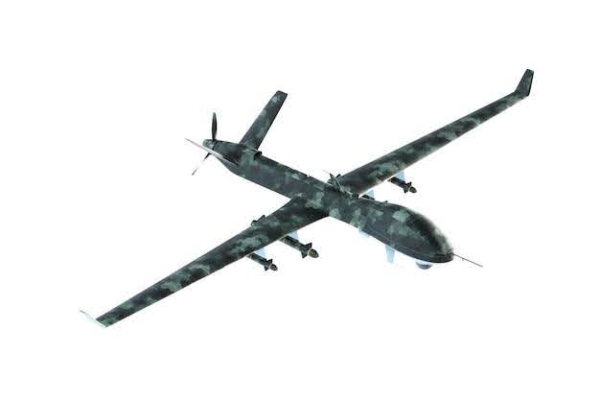
In the ever-evolving landscape of the aerospace and defense industry, staying ahead of technological advancements is crucial for organizations to remain competitive. By embracing emerging technologies, aerospace and defense companies can transform their operations and deliver value to their customers in innovative ways. In this article, we will explore the top technology trends that are expected to shape the aerospace and defense industry in 2024.
1. Sustainability in Aerospace
The aerospace industry is facing increasing pressure to reduce its carbon footprint and contribute to global sustainability efforts. As a result, one of the key trends in the industry is the adoption of sustainable practices and technologies. This includes the use of biofuels to reduce dependence on fossil fuels and lower carbon emissions, as more than 100 countries have agreed to reduce the carbon intensity of aviation fuel by 5 percent in 2030.
Another aspect of sustainability in aerospace is the exploration of alternative energy sources, such as electric flight technology. These advancements in sustainable aviation technologies not only contribute to environmental conservation but also provide long-term cost savings for aerospace companies.
Research in these areas is key, as further advancements in engine efficiency technologies are needed to achieve the 15-20 percent carbon emissions reductions required for net-zero plans.
2. Artificial Intelligence (AI) and Machine Learning (ML)
Artificial Intelligence (AI) and Machine Learning (ML) are transforming the aerospace industry in several areas, including autonomous systems, predictive maintenance, and advanced manufacturing techniques. By leveraging data analytics and automation, companies can optimize operations, reduce costs, and improve safety. For example, AI algorithms can detect anomalies in aircraft performance data, enabling preventative maintenance before any issues arise. In 2024, we can anticipate even more sophisticated applications of AI and ML, such as autonomous decision-making systems and intelligent supply chain management.
3. Digital Transformation and Digitization of Aerospace Operations
Digital transformation will continue to be a key focus for the aerospace industry in 2024. The adoption of advanced technologies such as Internet of Things (IoT), Big Data analytics, and cloud computing will enable more efficient operations, predictive maintenance, and improved decision-making. Embracing digital transformation allows aerospace companies to stay competitive in a rapidly changing industry, providing real-time insights, enhancing safety, and optimizing performance.
Digitization is reshaping aerospace operations, from product development to supply chain management. By embracing digital technologies and implementing smart factory concepts, aerospace companies can improve efficiency and productivity. Digitization enables seamless communication between different stakeholders, reduces data silos, and improves overall operational visibility.
At the design stage, model-based systems engineering allows for virtual design, analysis, and verification of systems, reducing the time required for qualification and certification. Industrial Internet of Things (IIoT) technologies enable real-time data synchronization and optimize manufacturing processes. Aerospace companies can also leverage digital twins, which are virtual replicas of physical assets, to track parts throughout their lifespan and improve maintenance protocols.
4. Additive Manufacturing in Aerospace
Additive manufacturing, also known as 3D printing, is transforming aerospace manufacturing processes. It enables the rapid development of parts and components, reduces production costs, and allows for the use of novel materials. Additive manufacturing also enables the production of lightweight components, which is crucial for improving fuel efficiency and reducing emissions in the aerospace industry.
Wayland Additive is a startup that develops 3D printing machines for aerospace manufacturing. Their electron beam additive manufacturing (EBAM) process allows for the development of hard-wearing and high-temperature materials, such as turbine blades and structural parts. This technology provides aerospace manufacturers with the ability to produce stronger and lighter parts, ultimately enhancing overall performance and reducing environmental impact.
5. Advanced Satellite Technology
The application of satellite technology is expanding in the aerospace industry, driven by the increasing demand for geospatial intelligence and connectivity. Satellites are becoming smaller and more cost-effective, enabling their use in various applications, including Earth observation, remote sensing, and communication.
Startups like Dragonfly Aerospace are developing satellite buses that accommodate small satellites for Earth observations. These cost-effective platforms allow startups and small satellite manufacturers to launch satellites into lower Earth orbit (LEO) in an affordable manner. Additionally, advanced ground systems are being developed to monitor satellite constellations without human intervention, ensuring efficient operation and data transmission.
6. Immersive Technologies in Aerospace Training
Immersive technologies, such as virtual reality (VR) and augmented reality (AR), are being utilized in aerospace training to enhance learning and improve operational efficiency. VR and AR simulations allow pilots to practice in realistic environments, improving proficiency and reducing the risks associated with flight operations.
Equally important, these technologies allow to train new workers: as the aerospace industry continues to evolve, there is a growing need for skilled workers who can build, maintain, and repair aircraft and engines. The demand for mechanics, aerospace engineers, and workers with trade skills is expected to increase significantly. Investing in workforce development ensures a pipeline of skilled workers and strengthens the industry’s ability to innovate and grow. Technologies such as the connected worker solution and factory workers to collaborate safely and remotely, and optimize maintenance processes as they allow to remotely troubleshoot a malfunctioning asset in real time.
The aerospace and defense industry is on the verge of significant technological advancements in 2024. From sustainable aviation fuel and electric propulsion systems to artificial intelligence and additive manufacturing, these trends will shape the future of the industry. As companies invest in workforce development, manufacturing capabilities, and digital transformation, they will be better equipped to meet the growing demand for air travel and address global challenges.
Collaboration and partnerships are critical in driving local innovation and technology localization, ensuring a sustainable and efficient aerospace ecosystem. By embracing these technology trends, the industry will continue to evolve and thrive, providing advanced solutions for various sectors and inspiring future generations of innovators.
